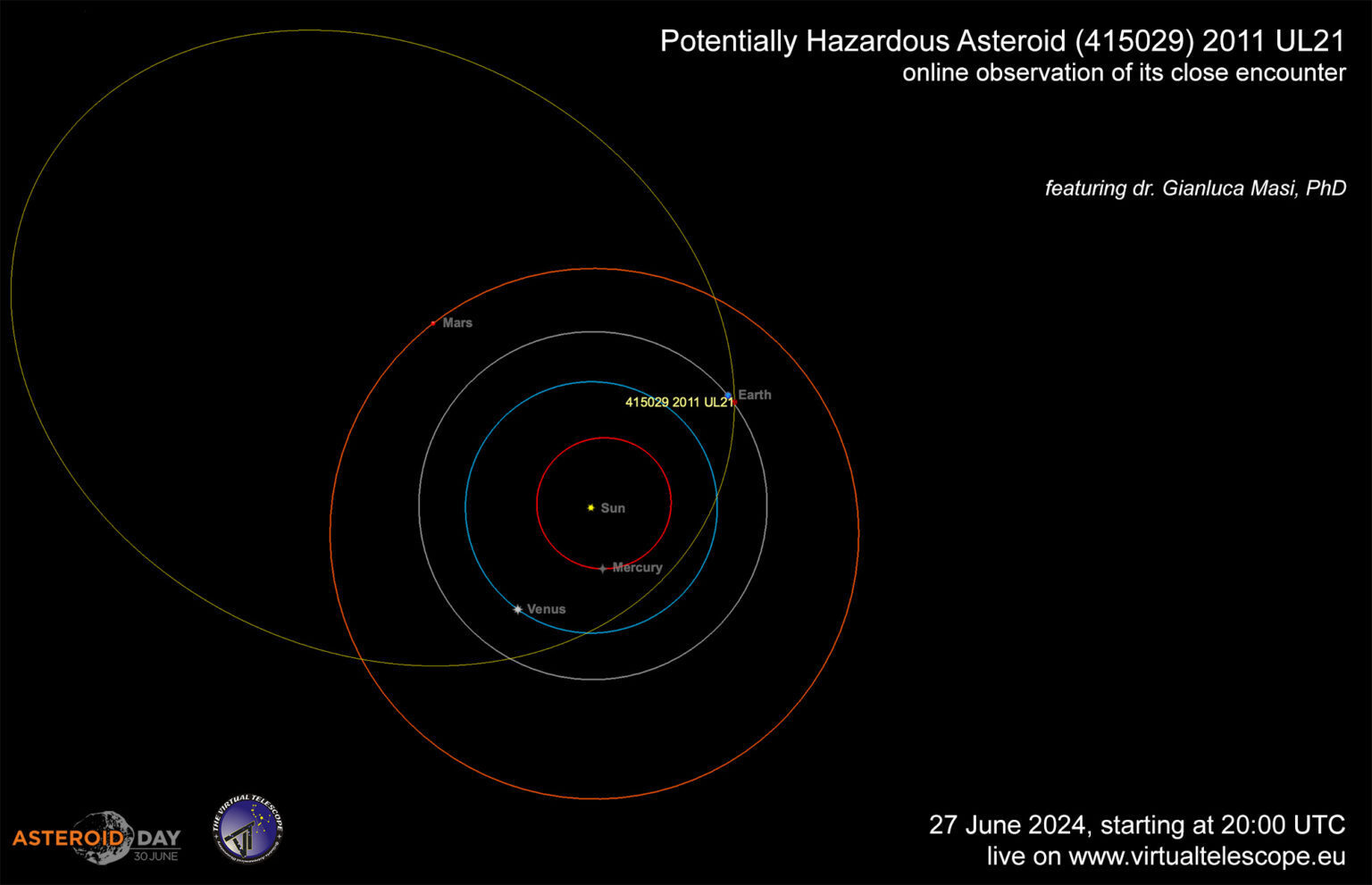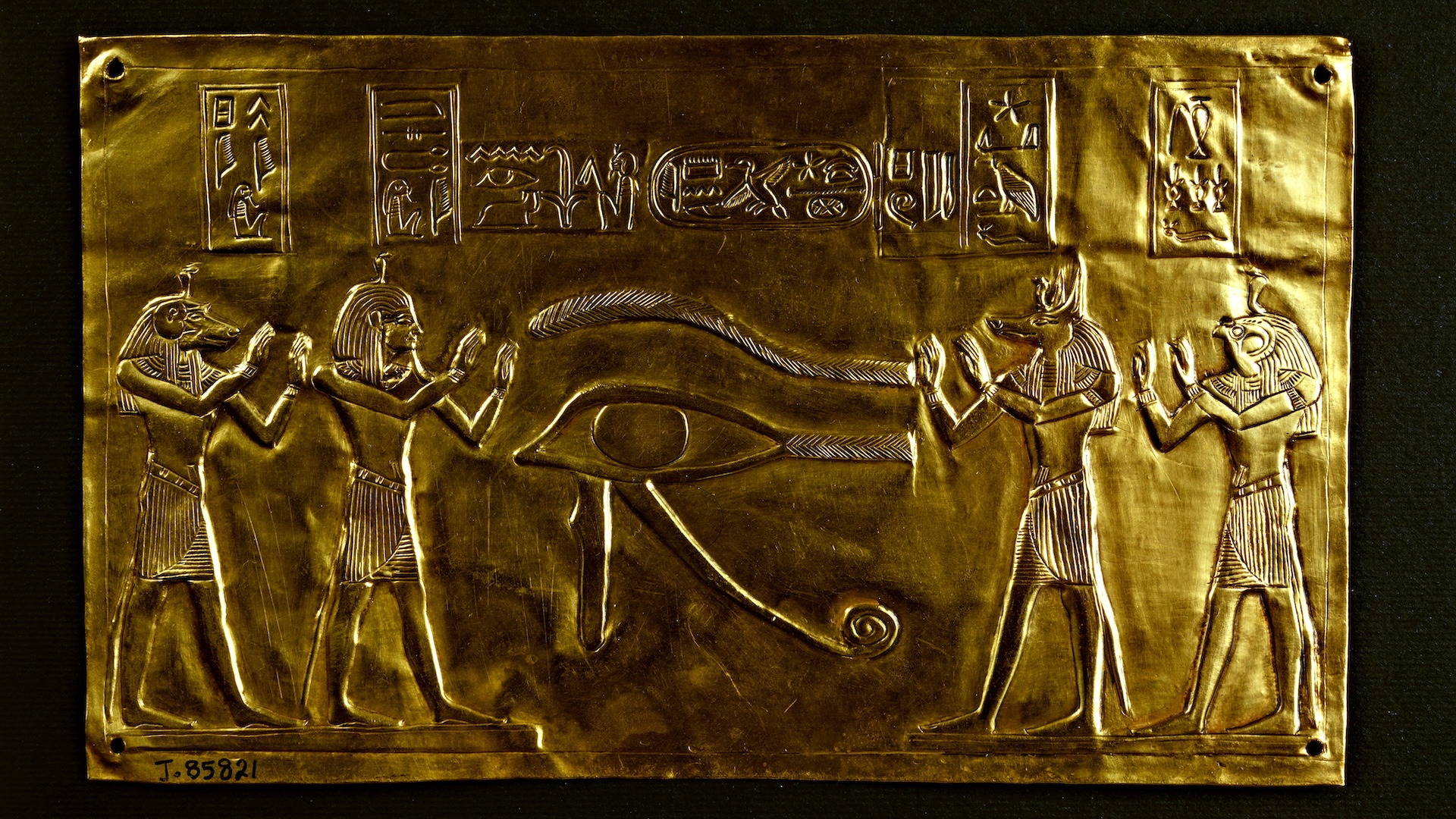Mountain-size 'planet killer' asteroid will make a close approach to Earth today — and you can watch it live
Shorty after 4 p.m. ET today (June 27), the mountain-size asteroid 2011 UL21 will come within 5 million miles of Earth, making it one of the largest space rocks to come that close to our planet for 125 years. Here's how to watch the close encounter live, or see it with a telescope.

A massive "planet killer" asteroid will make a very close approach to Earth today (June 27), safely zipping past our planet at around 58,000 mph (93,000 km/h). The "potentially hazardous," mountain-size object is one of the largest space rocks to pass close to Earth in more than a century — and you can watch the close encounter live.
The asteroid, 2011 UL21, is a near-Earth asteroid, meaning its orbit occasionally puts it within 1.3 astronomical units (AU) of the sun — or roughly 1.3 times the average distance between Earth and the sun.
It orbits our home star once every three years. Based on past observations, the space rock is somewhere between 1.1 and 2.4 miles (1.7 to 3.9 kilometers) wide, according to SpaceReference.org, meaning it's larger than 99% of known near-Earth asteroids, according to the European Space Agency (ESA).
2011 UL21 is likely at least 10 times smaller than the largest space rock to ever hit Earth, the Vredefort asteroid, and around five times smaller than the rock that wiped out the dinosaurs around 66 million years ago.
However, while any potential impact from 2011 UL21 would be less extreme than these historic collisions, the asteroid still has the potential to cause damage on a continental scale and eject enough debris into the atmosphere to trigger significant climatic changes, which is why it is considered a "planet killer."
Asteroid 2011 UL21 will zoom past at around 4.1 million miles (6.6 million km) from Earth, which is closer than it's been to our planet for at least 110 years, according to simulations by NASA's Jet Propulsion Laboratory (JPL). At this distance, it is considered a potentially hazardous object by NASA. However, this is still around 17 times farther away from our planet than the moon.

Although the space rock poses no threat to Earth — either now or in the future — it is interesting because it's probably one of the 10 biggest asteroids to pass within 4.7 million miles (7.5 million km) of our planet since 1900, Gianluca Masi, an astrophysicist and director of the Virtual Telescope Project (VTP), wrote in a recent statement.
Sign up for the Live Science daily newsletter now
Get the world’s most fascinating discoveries delivered straight to your inbox.
Related: 'Planet killer' asteroids are hiding in the sun's glare. Can we stop them in time?

We think the Unistellar eQuinox 2 is the best overall telescope for beginners, and would be perfect for hunting asteroids in the night sky. For a more in-depth look at this telescope, check out our Unistellar eQuinox 2 review.
You can watch 2011 UL21's closest approach thanks to a free livestream from the VTP, which will share the view of the asteroid from the Bellatrix Astronomical Observatory in Ceccano, Italy. The stream begins at 4 p.m. ET on June 27, with the close approach predicted to occur 15 minutes later.
You may also be able to spot the asteroid in the night sky with a decent telescope. It will be at its brightest on June 28 and June 29 and should be visible from the Northern Hemisphere if you know where to look. At its brightest, it will have a similar brightness to Proxima Centauri — the nearest known star to the sun, according to VTP.
2011 UL21 will not get this close to Earth again until 2089, when the space rock will get to within 1.7 million miles (2.7 million km) of our planet — more than two and a half times closer to us than its current approach, according to JPL simulations.
There is zero chance that any known planet killer asteroid will slam into Earth for at least the next 1,000 years. However, there will be some close calls with smaller asteroids in the next few years. For example, the asteroid Apophis, which is big enough to wipe out an entire city, will zip past Earth closer than some satellites in 2029.

Harry is a U.K.-based senior staff writer at Live Science. He studied marine biology at the University of Exeter before training to become a journalist. He covers a wide range of topics including space exploration, planetary science, space weather, climate change, animal behavior and paleontology. His recent work on the solar maximum won "best space submission" at the 2024 Aerospace Media Awards and was shortlisted in the "top scoop" category at the NCTJ Awards for Excellence in 2023. He also writes Live Science's weekly Earth from space series.










